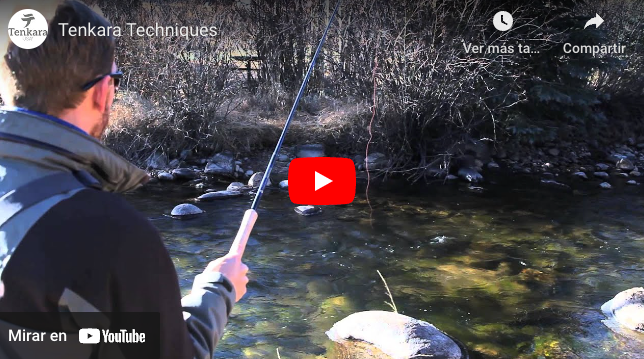In this video Daniel Galhardo, founder of Tenkara USA, shares six basic presentation techniques for tenkara. These techniques were taught to Daniel directly from the main tenkara anglers in Japan, namely: Dr. Hisao Ishigaki, Sakakibara Masami, Katsutoshi Amano and Yuzo Sebata. After learning and understanding the Japanese tenkara techniques, Daniel has synthesized the knowledge and developed them into a system of tenkara techniques listed below, which he uses when teaching clinics around the world.
1) Dead-drift: allow the fly to naturally drift with the current
2) Pausing: move the rod tip upstream from the fly to pause the fly in place for a couple of seconds in spots where fish are likely to be, such as in front of rocks.
3) Pause-and-Drift: Put the rod tip upstream from the tenkara fly to pause it for a second or two, then let it drift, pause it again, let it drift.
4) Pulsing: with a rhythmic motion move your fly up and down, making the tenkara fly pulse with life. The tenkara fly will open its hackle when you pull it, but close a bit when you relax it.
5) Pulling: this is a bit like using your fly as a streamer, where you will impart a lot of action. Part of the tenkara line must be in the water to serve as an anchor as you pull the tenkara fly across or upstream about 1 1/2ft at a time. It is particularly useful in faster or higher water conditions.
6) Plunging: This is a technique that may be combined with any of the previous 5 techniques and is used to help sink your fly without using any weight, using currents instead. Cast upstream from a place where the water drops, plunges or gets channeled between rock, as the fly hits the part where the water is more turbulent, let some of the line into the turbulence to take it down. If you’re doing it correctly and hitting a good spot, your line will seem to stop for a couple of seconds, then it may move in circles a bit, and then it will move downstream, typically fairly deep. The best way to learn this technique in particular is to go out and try fishing without weight and observe what currents do to your fly.
These techniques are the foundation of tenkara. The best way to learn them and improve on them is to go out and give them a try. There is no right or wrong in terms of how much you should move your fly, how long you should pause the tenkara fly, etc. However, in the video I do share a couple of tips that will prove useful, especially: when pulsing the fly avoid having a lot of erratic movement and focus on an easy rhythm that will allow fish to take the fly. When dead-drifting across or a bit downstream, try starting with your arm close to your body then extend it out and downstream to create a better drift.
Tenkara is simple fly fishing; these techniques for tenkara are most effective used a tenkara rod, but may also be tried with rod and reel. The tenkara techniques above, presented as they are here are a system of techniques copyrighted by Daniel Galhardo and Tenkara USA.
If you missed the first video in the series of tenkara foundations, here is the video on how to cast with tenkara:
